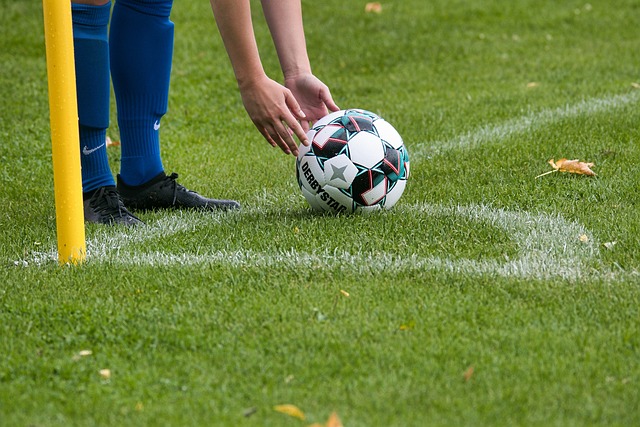Football is a sport that demands more than just skill with the ball—it’s a test of strength, speed, endurance, and mental toughness. While technique is undeniably important, the foundation of a great football player lies in their physical conditioning. Without it, even the most talented players can struggle to maintain their performance over the course of a match or an entire season.
In this article, we’ll dive deep into the world of football conditioning—looking at essential training techniques to improve endurance, strength, and overall fitness. Whether you’re a beginner or a seasoned pro, conditioning is a cornerstone of success on the field. And trust me, it’s not just about lifting weights or running laps; it’s about training your body to perform at its peak for the entire 90 minutes (and beyond) of a match.
1. The Importance of Football-Specific Fitness
Before we get into specific exercises, let’s talk about why football-specific fitness is so crucial. Football requires a unique blend of strength, speed, agility, and endurance. It’s not just about running long distances; you need explosive power for sprints, quick direction changes, and the ability to recover quickly between efforts. That’s why general fitness programs just don’t cut it for footballers—your conditioning needs to be tailored to the sport’s demands.
Personal Insight:
When I first started training for football, I made the rookie mistake of only focusing on endurance—long runs and steady-state cardio. I quickly learned that while my stamina improved, I was getting burnt out during the high-intensity bursts on the field. It wasn’t until I integrated football-specific conditioning—plyometrics, interval training, and strength work—that I saw a major improvement in both my on-field performance and my ability to recover.

2. Strength Training: The Foundation of Power
Strength is one of the building blocks of football conditioning. Without it, players struggle with the physical battles in the middle of the field, the challenge of holding off defenders, or the ability to execute powerful shots on goal. Strength training for football doesn’t mean bulking up like a bodybuilder—it’s about developing the right kind of functional strength.
Key Areas of Focus for Football Strength
- Leg strength: Explosive power in the legs is critical for sprints, jumps, and tackles. Exercises like squats, lunges, and leg presses help develop the muscles in the quads, hamstrings, and glutes.
- Core strength: A strong core is essential for balance, stability, and quick changes in direction. Planks, Russian twists, and leg raises can build a solid foundation.
- Upper body strength: While football is more focused on lower-body power, upper body strength (especially in the arms, shoulders, and chest) helps with balance, shielding the ball, and winning aerial duels.
Effective Strength Training Routine
A well-rounded strength training routine for football should include both compound movements (like deadlifts and bench presses) and football-specific exercises (like kettlebell swings or single-leg squats). Ideally, you’ll want to train two to three times per week with an emphasis on high-intensity, low-repetition sets.
Pro Tip: Don’t skip the recovery. Strength gains aren’t made in the gym—they’re made during the recovery period. Rest is just as important as the workout itself.
3. Agility Workouts: Quick Feet, Quick Mind
In football, agility is crucial. The ability to stop and start quickly, change direction on a dime, and accelerate explosively can make the difference between a successful tackle and a failed clearance. Agility training improves your ability to react to unpredictable situations on the field, keeping you one step ahead of your opponent.
Agility Drills to Try
- Cone drills: Set up cones in a zigzag pattern and practice weaving through them at speed. Focus on short, explosive movements.
- Ladder drills: Use an agility ladder to work on foot speed, coordination, and balance. Try different patterns like single steps, double steps, and lateral shuffles.
- Shuttle runs: Set up two markers and sprint between them in a back-and-forth pattern. This simulates real match conditions, where you’re constantly changing direction.
Personal Story:
I’ll never forget my first encounter with an agility ladder. I thought I was in pretty good shape, but when I tried it, my feet got tangled up like spaghetti. I was humbled but determined to improve. With consistent practice, I noticed a big difference in my ability to beat defenders with quick turns and acceleration.
The Mental Aspect of Agility
Agility isn’t just about physical movement—it’s about mental focus. You need to anticipate what your opponent is going to do next. The quicker you read the game, the quicker your body can react.
4. Plyometric Exercises: Explosive Power
Plyometrics are all about developing explosive power. These exercises train your muscles to exert maximum force in the shortest amount of time, which is essential for sprints, jumps, and tackles. They improve both strength and speed, which is exactly what you need to perform well in a fast-paced game like football.
Top Plyometric Exercises for Football
- Box jumps: Jump onto a box or platform with both feet. This works your legs and core while improving your explosive power.
- Lateral bounds: Jump from side to side, landing softly with each jump. This helps develop lateral speed and agility, key for evading tackles and covering ground.
- Jump squats: Perform squats, but at the top of each squat, explode upward with a jump. This builds strength and power in the legs.
Pro Tip: Plyometric exercises are intense, so it’s important to gradually increase intensity and volume. Start with a low number of reps and focus on form before increasing the challenge.
5. Cardiovascular Conditioning: Building Stamina for 90 Minutes
Endurance is at the heart of any great football player’s conditioning program. The sport demands high-intensity bursts followed by short recovery periods, so a solid cardiovascular conditioning program is key to maintaining energy levels throughout the match.
Interval Training for Footballers
Instead of long, steady-state runs, focus on interval training. This simulates the stop-and-start nature of football, where players are constantly sprinting, recovering, and then sprinting again.
Sample Interval Workout:
- Warm-up: 10 minutes of light jogging.
- Sprint: 30 seconds of maximum sprinting.
- Recovery: 90 seconds of light jogging or walking.
- Repeat 10-15 times.
- Cool down: 10 minutes of light jogging or walking.
Why Interval Training Works
Interval training helps improve your aerobic (long-term) and anaerobic (short-term) energy systems, which are both essential for football. During a match, you need to be able to sprint hard, recover quickly, and then do it all over again.
Critical Insight:
When I first started focusing on interval training, I could tell the difference right away. My stamina improved, and I was able to keep up with the high-paced game without feeling exhausted in the final minutes. This type of conditioning gives you the mental edge, too—knowing you can keep going when others are tiring out is a game-changer.
6. Core Stability: The Hidden Strength
A strong core is the backbone of any football player. It helps with balance, quick direction changes, and maintaining control of the ball under pressure. Footballers rely on their core for everything from sprinting to shooting to winning aerial duels.
Core Stability Exercises
- Planks: Hold a plank position, keeping your body straight from head to toe. This works your abs, back, and shoulders.
- Russian twists: Sit on the ground with your legs bent, lean back slightly, and twist your torso from side to side. This targets the obliques and improves rotational strength.
- Leg raises: Lying flat on your back, lift your legs up and down while keeping your core engaged. This works your lower abs, which are crucial for stability during sudden movements.
Pro Tip: A strong core is not just about looking good—it’s about functional strength. It keeps your body stable during dynamic movements, which helps you maintain control on the ball and avoid injuries.
7. Endurance Drills: Long-Term Stamina for Success
Finally, don’t forget about endurance drills. While interval training builds short-term stamina, longer, steady-state endurance workouts are important for building overall conditioning. Football is a game of high intensity, but it’s also about being able to last the full 90 minutes.
Sample Endurance Workout:
- Long run: Run at a moderate pace for 45-60 minutes.
- Tempo run: Alternate between jogging and running at a faster pace every 5-10 minutes.
- Fartlek training: Mix sprints and jogs within your long run to simulate match conditions.
Personal Insight:
I used to dread long runs, but over time I realized their value. They not only improve my cardiovascular fitness but also give me the mental toughness to push through tough moments in the game. If you can keep running strong at the 80th minute, you’ll be a huge asset to your team.



